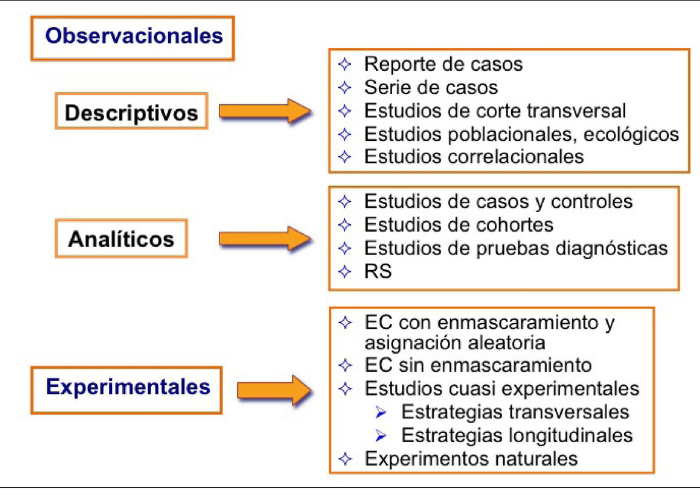In the field of research, various study types are employed to investigate different phenomena and answer research questions. These study types provide researchers with different approaches and methodologies for gathering data and analyzing it. Understanding the different study types is crucial for researchers and students alike, as it enables them to select the most appropriate design for their research objectives. In this article, we will explore the different study types, including observational, experimental, and descriptive studies, and discuss their characteristics and applications.
Observational Study Types
Observational studies involve observing and analyzing individuals or groups without any intervention or manipulation by the researcher. These types of studies aim to establish associations or relationships between variables but do not establish causality. There are several types of observational studies, each with its own strengths and limitations.
Cross-sectional Study
A cross-sectional study is a type of observational study where data is collected at a single point in time. It aims to provide a snapshot of a population or a specific phenomenon at a particular moment.
Cross-sectional studies are relatively quick and cost-effective, making them a popular choice in public health and social sciences. However, as data is collected at a single point in time, it is not possible to establish cause-and-effect relationships or determine the temporal sequence of events.
Case-control Study
A case-control study is another type of observational study that compares individuals with a specific outcome or condition (cases) to individuals without the outcome or condition (controls). Researchers retrospectively collect data on both cases and controls and analyze the differences between the two groups.
Case-control studies are particularly useful when studying rare diseases or outcomes, as they allow researchers to efficiently investigate potential risk factors. However, they are susceptible to recall bias, as participants may have difficulty accurately recalling past exposures or events.
Cohort Study
A cohort study is a longitudinal study that follows a group of individuals over a period of time to determine the incidence of a particular outcome or condition. Cohort studies can be either prospective or retrospective, depending on whether data collection begins before or after the outcome has occurred. Prospective cohort studies are considered the gold standard for establishing cause-and-effect relationships, as they allow researchers to collect data on exposures and outcomes over time. However, cohort studies can be time-consuming and resource-intensive, making them less feasible in certain research settings.
Experimental Study Types
Experimental studies involve the manipulation of variables by the researcher to establish cause-and-effect relationships. These types of studies aim to determine whether a specific intervention or treatment has an effect on the outcome of interest.
Experimental studies are considered the gold standard for establishing causality, as they allow researchers to control for confounding variables and randomize participants to treatment groups.
Randomized Controlled Trial
A randomized controlled trial (RCT) is the most rigorous type of experimental study. Participants are randomly assigned to either the intervention group or the control group, and the intervention is applied to the intervention group while the control group receives either a placebo or standard treatment.
RCTs are often used in medical research to evaluate the effectiveness of new drugs or treatments. By randomly assigning participants, RCTs minimize selection bias and ensure that any observed differences between the groups are due to the intervention itself. However, RCTs can be expensive and time-consuming, and ethical considerations may limit their use in certain situations.
Quasi-experimental Study
Quasi-experimental studies are similar to RCTs but lack randomization. Instead, participants are assigned to treatment groups based on non-random methods, such as geographical location or time of enrollment.
Quasi-experimental studies are often used in situations where randomization is not feasible or ethical, such as evaluating the effectiveness of public health interventions. While quasi-experimental studies do not provide the same level of evidence as RCTs, they can still provide valuable insights and help inform decision-making.
Single-subject Design
Single-subject designs are experimental studies that focus on individual participants rather than groups. These designs are often used in psychology and behavioral sciences to investigate the effects of interventions on individual behavior.
Single-subject designs typically involve multiple baseline measurements, followed by the introduction of the intervention and subsequent measurements. While single-subject designs may lack the statistical power of group studies, they allow for a detailed analysis of individual responses to interventions.
Descriptive Study Types
Descriptive studies aim to describe and summarize the characteristics of a particular population or phenomenon. These types of studies do not investigate causal relationships but provide valuable information for understanding the prevalence, distribution, and patterns of a specific variable or condition.
Cross-sectional Study
While cross-sectional studies were discussed earlier as an observational study type, they can also be classified as descriptive studies. In a descriptive cross-sectional study, data is collected at a single point in time to provide a snapshot of a population or a specific phenomenon.
Descriptive cross-sectional studies are commonly used in epidemiology to estimate the prevalence of diseases or risk factors within a population. These studies can help identify patterns and trends, but they cannot establish cause-and-effect relationships.
Longitudinal Study
A longitudinal study is a type of descriptive study that follows a group of individuals over an extended period of time. Longitudinal studies can provide valuable insights into the natural history of a disease or the progression of a particular phenomenon.
By collecting data at multiple time points, researchers can observe changes and trends over time and identify potential risk factors or predictors. However, longitudinal studies require a long-term commitment and can be subject to attrition, as participants may drop out or be lost to follow-up.
Case Study
A case study is an in-depth analysis of a single individual, group, or event. Case studies are often used in social sciences, psychology, and business research to gain a deep understanding of a particular phenomenon.
Researchers collect detailed information through interviews, observations, and document analysis to develop a comprehensive case study. While case studies provide rich and detailed information, they are limited in their generalizability and cannot establish causation.
Systematic Review and Meta-analysis
Systematic reviews and meta-analyses are study types that aim to summarize and synthesize existing research on a particular topic. These study types are considered the highest level of evidence in evidence-based practice and are widely used in healthcare and other fields.
A systematic review involves a comprehensive search of the literature to identify all relevant studies on a specific research question. The identified studies are then critically appraised and synthesized to provide an unbiased summary of the available evidence. Systematic reviews are valuable for identifying research gaps, evaluating the quality of existing studies, and informing clinical practice.
Meta-analysis, on the other hand, is a statistical technique used to combine the results of multiple studies into a single quantitative estimate. By pooling data from multiple studies, meta-analysis can increase the statistical power and precision of the findings and provide more robust conclusions. Meta-analyses are particularly useful when individual studies have small sample sizes or inconsistent results.
Conclusion
In conclusion, understanding the different study types is essential for researchers and students in various fields. Observational studies, experimental studies, and descriptive studies each offer unique approaches and methodologies for investigating research questions. Observational studies provide insights into associations and relationships, while experimental studies establish cause-and-effect relationships.
Descriptive studies summarize the characteristics of a population or phenomenon. Systematic reviews and meta-analyses synthesize existing research and provide the highest level of evidence. By familiarizing themselves with these study types, researchers can select the most appropriate design for their research objectives and contribute to the advancement of knowledge in their respective fields.




